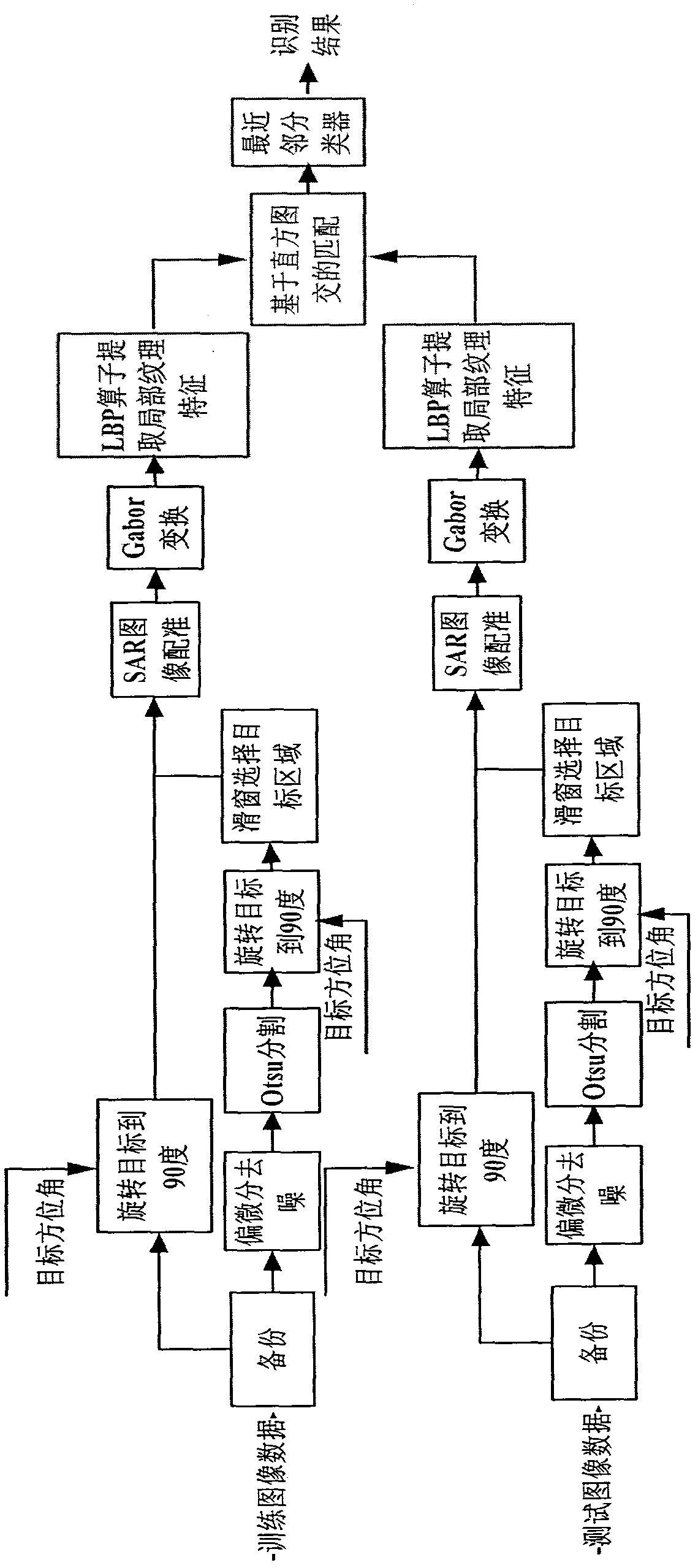SAR variant target identification method based on local textural feature
A target recognition and texture feature technology, applied in the field of radar, can solve the problems of falling to 96.12%, poor sensitivity to local changes of test data, low recognition rate, etc., to reduce interference, facilitate subsequent recognition, and high recognition rate.
- Summary
- Abstract
- Description
- Claims
- Application Information
AI Technical Summary
Problems solved by technology
Method used
Image
Examples
Embodiment Construction
[0027] refer to figure 1 , the specific implementation steps of this embodiment are as follows:
[0028] Step 1, back up each SAR image in the training sample and the test sample into two copies, one of which is used to determine the target area of the image, perform step 2, and the other is used to match the original image with the determined target area, and execute step6.
[0029] Step 2, use partial differential to denoise the SAR image, calculate the mean value of the amplitude of the background area of the SAR image, and determine the partial differential diffusion operator according to the mean value The partial differential denoising equation is:
[0030] I t = ∂ ∂ x ( c ( . ) ▿ u I x ) . - ...
PUM
 Login to View More
Login to View More Abstract
Description
Claims
Application Information
 Login to View More
Login to View More - R&D
- Intellectual Property
- Life Sciences
- Materials
- Tech Scout
- Unparalleled Data Quality
- Higher Quality Content
- 60% Fewer Hallucinations
Browse by: Latest US Patents, China's latest patents, Technical Efficacy Thesaurus, Application Domain, Technology Topic, Popular Technical Reports.
© 2025 PatSnap. All rights reserved.Legal|Privacy policy|Modern Slavery Act Transparency Statement|Sitemap|About US| Contact US: help@patsnap.com



